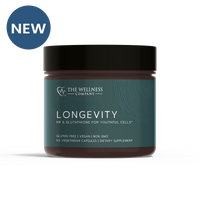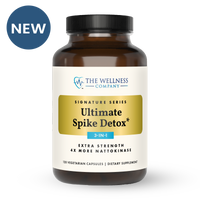If Your Grocery Store Has a Health Food Section, What Does it Make the Rest of the Store?

Max Lugavre testified during a recent senate hearing to end the corporate capture of our regulatory bodies and academic institutions by the food and pharmaceutical industries.
Could the massive increases over the past decades of cancer, diabetes, obesity, heart disease, and behavioral problems be partly due to our food supply?
The simple answer is yes.
Dyes and additives banned in other countries are allowed in our food supply
During recent senate testimony in Washington D.C. , Vani Hari, AKA “The Food Babe” stated: “Titanium dioxide. This ingredient is banned in Europe because it can cause DNA damage. Artificial dyes are made from petroleum in products containing these dyes require a warning label in Europe. And they have been linked to cancer and disruptions in the immune system.”

“An ingredient called dimethylpolysiloxane. Is an ingredient preserved with formaldehyde, a neurotoxin.” (Added to U.S. fries, not U.K. fries)
Why do we have so many harmful ingredients in not just McDonalds fries but many other products lining our shelves?
Our adulterated food system was set up to make our foods addictive.
The cascading fallout of preventable diseases is just icing on the cake-big business for big pharma.
Food Additives and Dyes: Hidden Dangers in American Processed Foods

Many processed foods in the United States contain additives and dyes that are banned or restricted in other countries due to potential health risks. These are just a few of a long list of additives, dyes, and oils that are making us sick.
Artificial Food Dyes
Food dyes are added to make food more appealing
Food dye consumption per person has increased fivefold in the United States since 1955, with three dyes—Red 40, Yellow 5, and Yellow 6—accounting for 90% of the dyes used in foods. In Europe, as of July 2010, most foods that contain artificial dyes must carry labels warning they may cause hyperactivity in children.
Red Dye 40
Red Dye 40, also known as Allura Red, is one of the most widely used food dyes in the U.S. It's found in a variety of products, including cereals, candies, and beverages.
However, this dye has been linked to behavioral issues in children, including hyperactivity and attention problems.
Yellow 5 and Yellow 6
These yellow dyes, often used in snacks, baked goods, and sauces, have raised concerns about potential health risks. Some research indicates that they may contribute to behavioral issues in children and could potentially be carcinogenic.
Blue dye #1- banned in Norway, Finland, France, and Switzerland. It's found in many U.S. foods, including cereal and ice cream. Some researchers have linked Blue #1 to hyperactivity, allergies, and aggressiveness in children.
Brominated Vegetable Oil (BVO)
BVO is used as an emulsifier in citrus-flavored soft drinks to prevent separation of ingredients.
This additive has been linked to thyroid problems and potential neurological issues. While it's still allowed in the U.S., it has been banned in the European Union and Japan.
Potassium Bromate
Commonly used in bread products and flour, potassium bromate is a potential carcinogen. It's banned in many countries, including the European Union, Canada, and China, but remains legal in the U.S. Potassium bromate is a byproduct of bromine that can form in hot tubs and pools when bromine is exposed to UV systems, sunlight, ozone, hydrogen peroxide, or hydroxyl radicals. The EPA classifies the bromate ion (BrO3-) as a known carcinogen. Considered a renal carcinogen.
Olestra
This fat substitute, found in some low-fat snacks, has been associated with gastrointestinal issues and nutrient malabsorption. While approved in the U.S., it's banned in many other countries.
Azodicarbonamide
Used as a whitening agent and dough conditioner in breads, pastries, and packaged baked goods, azodicarbonamide has been linked to respiratory issues and is a potential carcinogen. It's banned in the European Union and Australia but remains legal in the U.S.
BPA-lined food cans
Banned in many other countries, BPAs are a known endocrine disruptor.
Omega 6 Seed oils
Found in soybean, grapeseed, safflower, sunflower, cottonseed, corn, and rice bran oil, linoleic oil has been linked to coronary heart disease.
3 things you can do to avoid the harmful additives (other than moving out of the country)
- Get educated. Follow The Food Babe website and Environmental Working Group for information that can help you make educated decisions when at the grocer. In addition, join the cause. Food Babe has petitions and lists ways you can advocate for healthier alternatives and a safer food supply.
- Learn to cook from scratch. By doing this, you can avoid many harmful additives.
- Look for alternative snacks and less harmful packaged foods. The Food Babe is an excellent source of information to help you make informed food choices.
Dyes and additives aren’t the only health risks we face. Microplastics are just as dangerous to our health
Microplastics have become a growing concern for human health due to their widespread presence in our environment and food supply. Microplastics are commonly defined as solid plastic particles or synthetic fibers of the size between 1 and 5000µm, or micrometers.
They are found in:
Our air and food- in fish, fruits vegetables, drinking water, and table salt.
In the human body- including breast milk, placenta, testicles, heart, liver, kidneys, and lungs.
In the home-Synthetic textiles, plastic water bottles, and personal care products.
In the soil-where microplastic can break down the structure of soil.
Health Effects of Microplastics
- Oxidative Stress and Inflammation
Microplastics can cause oxidative stress and inflammation in the body, potentially leading to various health issues. This cellular damage may contribute to chronic diseases (autoimmune, diabetes, heart disease) over time.
- Linked to ADHD
- Digestive System Issues
- When ingested, microplastics can accumulate in the gut, potentially causing gastrointestinal problems and altering the gut microbiome.
- Cardiovascular Risks
- A recent study found that the presence of microplastics in blood vessels may double the risk of heart attack or stroke in people with heart disease.
- Reproductive and Developmental Toxicity
- Animal studies have shown that microplastic exposure can lead to reduced sperm count and quality, as well as metabolic disorders in offspring.
- Neurotoxicity
- Research in mice has demonstrated that microplastics can cross the blood-brain barrier, potentially leading to cognitive decline similar to dementia.
- Endocrine Disruption
- Many plastics contain chemicals known as endocrine disruptors, which can interfere with hormone function and potentially lead to various health issues.

The presence of microplastics on the surface of a bee’s body, especially
on the edge of the wings and the head. Created with BioRender.com.
Sadly, microplastics have been found on honeybees
Ways to Remove Microplastics from Food and Water
- Use water filters: Reverse osmosis and high-quality water filters can help remove microplastics from drinking water.
- Avoid plastic food containers: Store food in glass, stainless steel, or ceramic containers instead of plastic.
- Reduce consumption of packaged foods: Opt for fresh, unpackaged produce and foods when possible. If able, purchase from local farms or farmers markets. Better yet, start a garden.
- Wash produce thoroughly: This can help remove some microplastics that may be on the surface of fruits and vegetables.
- Choose natural fiber clothing: Synthetic fabrics can release microfibers during washing, which can end up in our food and water supply.
- Use a vacuum with a HEPA filter: This can help remove microplastic particles from household dust.
- Avoid microwaving food in plastic containers: Heat can cause plastics to release more chemicals and microparticles into food.
References
- Potera C. The artificial food dye blues. Environ Health Perspect. 2010 Oct;118(10):A428. doi: 10.1289/ehp.118-a428. PMID: 20884387; PMCID: PMC2957945.
- Center for Science in the Public Interest. (2024). Chemical cuisine: Learn about food additives. Environmental Working Group. (2024). What is food dye?
- Kobylewski, S., & Jacobson, M. F. (2010). Toxicology of food dyes. International Journal of Occupational and Environmental Health, 16(2), 220-246.
- Potera, C. (2010). Diet and nutrition: The artificial food dye blues. Environmental Health Perspectives, 118(10), A428.
- Liberatore, H. K., Daiber, E. J., Ravuri, S. A., Schmid, J. E., Richardson, S. D., & DeMarini, D. M. (2022). Disinfection byproducts in chlorinated or brominated swimming pools and spas: Role of brominated DBPs and association with mutagenicity. Journal of Environmental Sciences, 117, 253-263. https://jesc.ac.cn/ch/reader/download_pdf_file.aspx?journal_id=jesc_en&file_name=3618E016C89268ECD8B37F5D021E3E813EFD6D44032F0558AEB9C51B293FD5FEA79F288DC4274A72C5D1ED779321DCD68004CE84849033E11CD0881EC93D3118&open_type=self&file_no=S1001074222002273
- Kurokawa Y, Maekawa A, Takahashi M, Hayashi Y. Toxicity and carcinogenicity of potassium bromate--a new renal carcinogen. Environ Health Perspect. 1990 Jul;87:309-35. doi: 10.1289/ehp.9087309. PMID: 2269236; PMCID: PMC1567851.
- DiNicolantonio JJ, O'Keefe JH. Omega-6 vegetable oils as a driver of coronary heart disease: the oxidized linoleic acid hypothesis. Open Heart. 2018 Sep 26;5(2):e000898. doi: 10.1136/openhrt-2018-000898. PMID: 30364556; PMCID: PMC6196963.
- Zero Acre. (2024, October 15). What are seed oils and should you avoid them? https://www.zeroacre.com/blog/seed-oils-to-avoid
- Ziani K, Ioniță-Mîndrican CB, Mititelu M, Neacșu SM, Negrei C, Moroșan E, Drăgănescu D, Preda OT. Microplastics: A Real Global Threat for Environment and Food Safety: A State of the Art Review. Nutrients. 2023 Jan 25;15(3):617. doi: 10.3390/nu15030617. PMID: 36771324; PMCID: PMC9920460.
- United Nations Environment Programme. (2024, October 15). Plastic planet: How tiny plastic particles are polluting our soil. https://www.unep.org/news-and-stories/story/plastic-planet-how-tiny-plastic-particles-are-polluting-our-soil
- Association of American Medical Colleges. (2024, October 15). Microplastics are inside us all. What does that mean for our health? https://www.aamc.org/news/microplastics-are-inside-us-all-what-does-mean-our-health
- First Sentier MUFG Sustainability. (2024, October 15). Sources of microplastics and their distribution in the environment. https://www.firstsentier-mufg-sustainability.com/insight/sources-of-microplastics-and-their-distribution-in-the-environment.html
Written By Brooke Lounsbury














